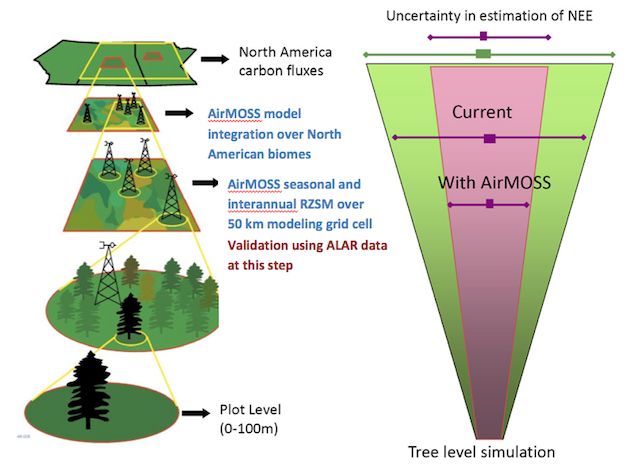Airborne Microwave Observatory of Subcanopy and Subsurface Campaign
The Airborne Microwave Observatory of Subcanopy & Subsurface (AirMOSS) campaign aims to decrease the error in the net ecosystem exchange (NEE) term for Northern America by including root zone soil moisture (RZSM) or water availability into an ecosystem model. Water availability is thought to be a significant source of the uncertainty seen in the yearly North American NEE. A G-3 aircraft equipped with an Uninhabited Aerial Vehicle Synthetic Aperture Radar (UAVSAR) to detect RZSM at 100 m resolution. Traditionally ecosystem models use towers to collect data used to determine input measures because they can record for long periods of time providing average estimates for many model inputs. However, towers typically sample an area on the order of 1 km2meaning their measurements are potentially unrepresentative of the area of interest. The Purdue Airborne Laboratory for Atmospheric Research (ALAR) will be used to collect flux data using the BAT probe and Cavity Ring Down Spectrometer (CRDS) along the flight track of the G-3 to validate the upscaling of tower data in the ecosystem model because the aircraft can measure fluxes over a much larger area. For more information, visit http://airmoss.jpl.nasa.gov/

